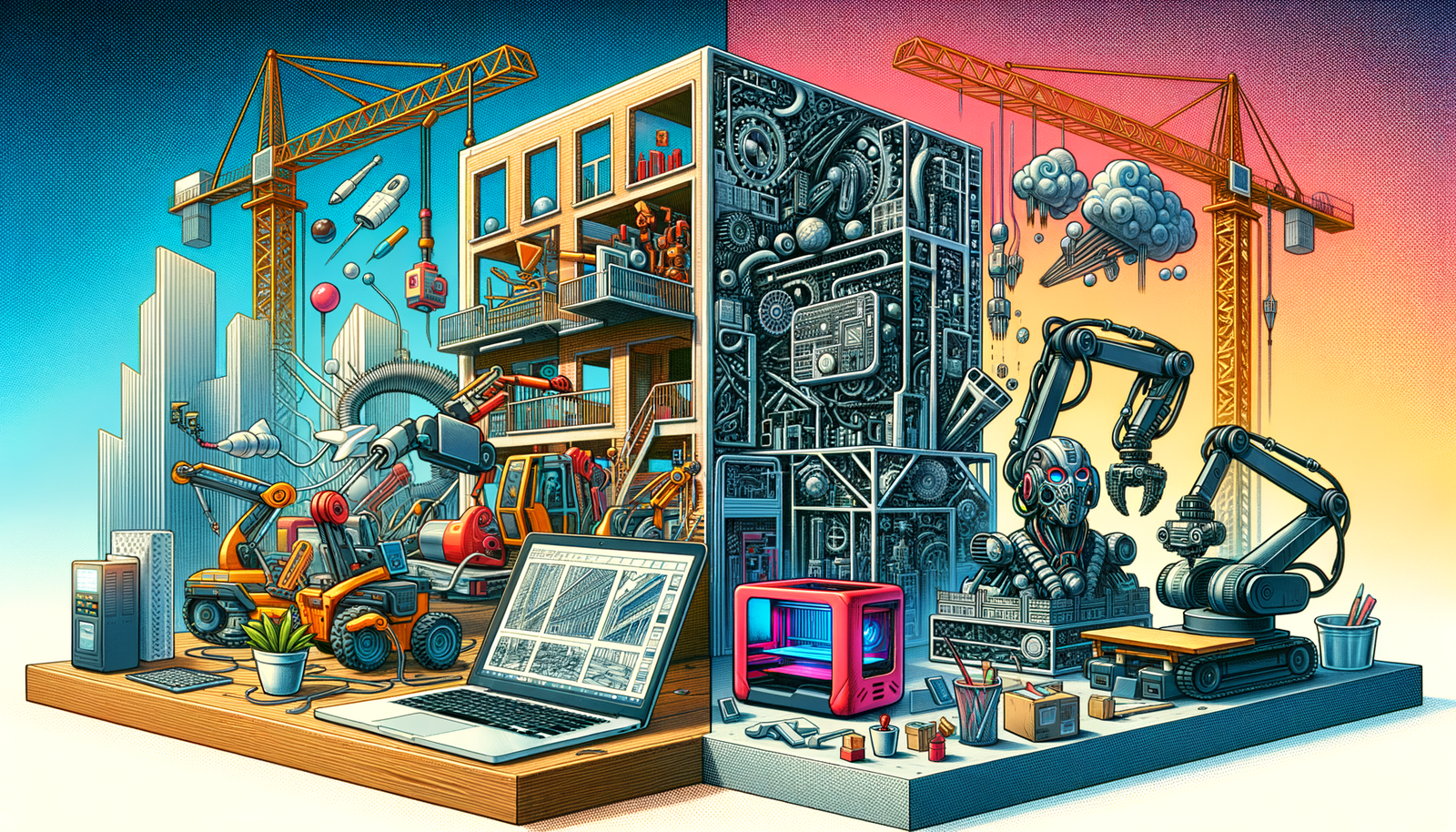Your Cart is Empty
Introduction to Digital Fabrication in Modern Architecture
Digital fabrication represents a significant leap forward in the field of architecture, dramatically altering the way structures are designed and built. By leveraging computer-controlled processes, architects can now translate complex digital designs directly into physical forms with unprecedented precision and efficiency.
Historically, the incorporation of digital fabrication in architecture started with the advent of computer-aided design (CAD) tools during the late 20th century. Over the years, these practices have evolved, integrating more advanced technologies that have opened up new possibilities in construction and design methodologies.
Technological advancements play a critical role in enabling digital fabrication. Key technologies such as CNC machining and 3D printing have become more accessible and sophisticated, allowing for the creation of intricate and highly customizable architectural components. Moreover, the continuous development of design software has facilitated the seamless implementation of these technologies, making digital fabrication an integral part of modern architectural practice.
Key Technologies in Digital Fabrication
3D Printing in Architecture
3D printing, or additive manufacturing, is one of the most groundbreaking technologies in digital fabrication. In architecture, several types of 3D printing technologies are employed:
- Fused Deposition Modeling (FDM): Utilizes a thermoplastic filament that is heated and extruded layer by layer to create a structure.
- Stereolithography (SLA): Uses a laser to cure and solidify layers of a photopolymer resin, producing highly detailed components.
- Selective Laser Sintering (SLS): Employs a laser to sinter powdered material, typically nylon, into solid structures.
These technologies have been applied in numerous architectural projects, enabling the creation of complex geometries that would be difficult or impossible to achieve with traditional construction methods.
CNC Machining
CNC (Computer Numerical Control) machining is another pivotal technology in digital fabrication. This process involves the use of computer-controlled machines to precisely cut, mill, and shape materials such as wood, metal, and plastic. CNC machining is especially useful in creating intricate architectural components and joining elements that require high precision.
Architectural projects that have utilized CNC machining often showcase the ability to produce highly detailed and bespoke elements, contributing to both the aesthetic and functional aspects of the structure.
Robotic Fabrication
Robotic fabrication leverages automated systems and robotic arms to enhance construction processes. These robots can perform tasks such as bricklaying, welding, and assembly with exceptional precision and efficiency. The integration of robotics in construction allows for the realization of complex designs that require meticulous accuracy and consistency.
Benefits of robotic fabrication include reduced labor costs, minimized human error, and the ability to work in hazardous or challenging environments, ultimately leading to safer and more efficient construction practices.
Design Software Integration
Generative Design and Parametric Modeling
Generative design and parametric modeling are transformative approaches in architectural design, driven by algorithms that explore a wide range of design possibilities. Generative design uses algorithmic processes to generate optimized design solutions based on specified criteria and constraints. This approach enables architects to explore innovative forms and structures that push the boundaries of traditional design.
Parametric modeling, on the other hand, involves the use of parameters to define the relationships between different elements of a design. This allows for dynamic adjustments and real-time modifications, facilitating a more iterative and flexible design process. Tools such as Grasshopper and Rhino are widely used in the industry for parametric modeling, enabling the creation of complex and adaptive architectural forms.
BIM and Digital Fabrication
Building Information Modeling (BIM) is an essential component in coordinating and streamlining digital fabrication processes. BIM involves the creation of a detailed digital representation of a building, encompassing all its physical and functional characteristics. This digital model serves as a comprehensive repository of information that can be used throughout the lifecycle of the building, from design to construction and maintenance.
BIM software such as Revit plays a crucial role in integrating digital fabrication workflows, ensuring that all stakeholders have access to accurate and up-to-date information. This leads to improved collaboration, reduced errors, and enhanced efficiency in project execution.
Simulation and Analysis Tools
Simulation and analysis tools are indispensable in the digital fabrication process, allowing architects to test and validate the structural integrity and performance of their designs before actual construction. These tools enable the prediction of how a structure will behave under various conditions, ensuring that it meets safety standards and performs as intended.
Examples of simulation tools used in architecture include ANSYS and Autodesk CFD. These software applications provide valuable insights into aspects such as load distribution, thermal performance, and material behavior, ultimately contributing to more informed and reliable design decisions.
Future Trends and Challenges
Innovations on the Horizon
The future of digital fabrication in architecture is marked by continuous innovation and the emergence of new technologies. One of the most promising areas is the integration of artificial intelligence (AI) and machine learning into design software. These technologies have the potential to revolutionize the design process by enabling predictive modeling and optimization, allowing architects to generate more efficient and sustainable designs.
Additionally, advancements in materials science are expected to contribute to the development of new fabrication methods and materials that can enhance the performance and sustainability of architectural structures.
Challenges and Considerations
Despite the numerous benefits and advancements in digital fabrication, there are several challenges that must be addressed. These include technical and logistical issues related to the adoption of digital fabrication technologies on a large scale. For example, the need for specialized equipment and skilled labor can be a barrier to widespread implementation.
Furthermore, ethical and environmental considerations are crucial in the context of digital fabrication. The production and disposal of materials used in digital fabrication processes can have significant environmental impacts, necessitating the development of sustainable practices and materials.
Conclusion and Implications
In conclusion, digital fabrication holds transformative potential for modern architecture, offering new possibilities for design and construction that were previously unimaginable. As technology continues to advance, the integration of digital fabrication in architectural practices is likely to become increasingly prevalent, driving innovation and efficiency in the industry.
Looking ahead, the continued development and adoption of digital fabrication technologies will shape the future landscape of architecture, enabling the creation of more complex, sustainable, and efficient structures. Architects and designers who embrace these advancements will be well-positioned to lead the way in this exciting and rapidly evolving field.







